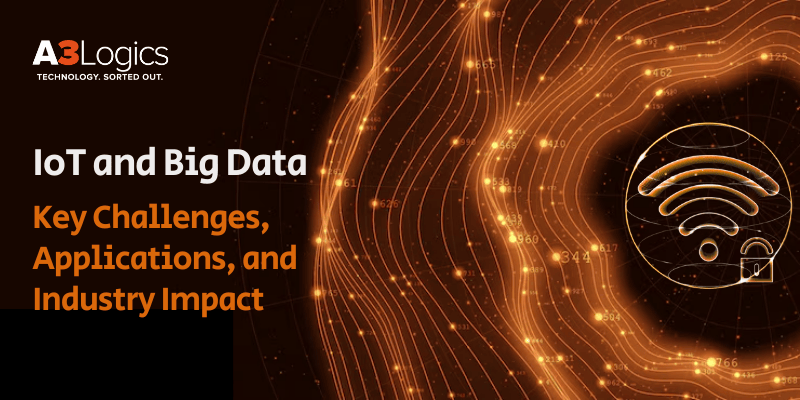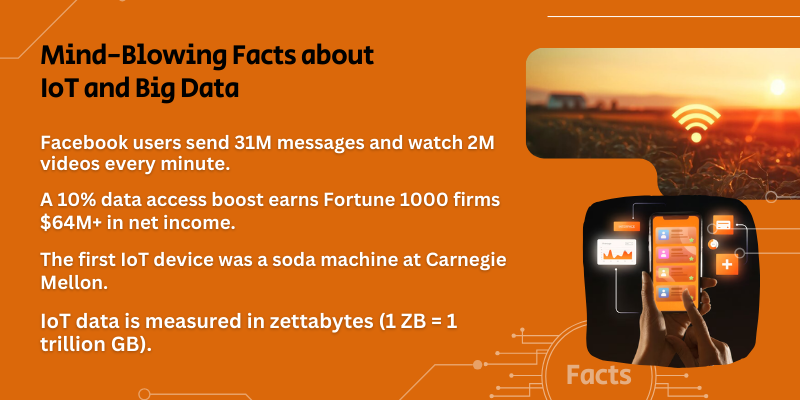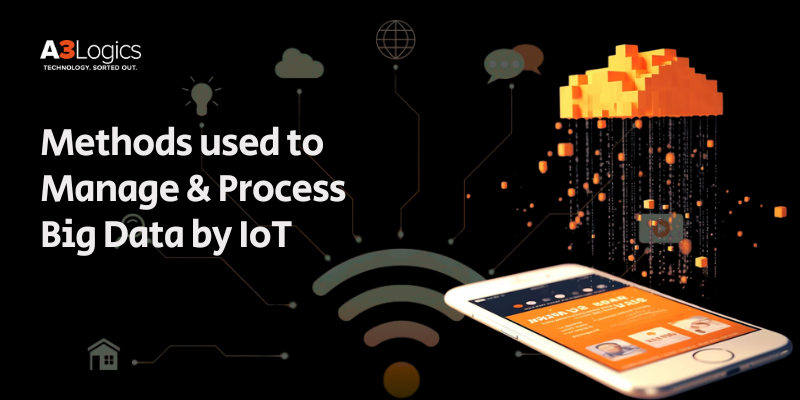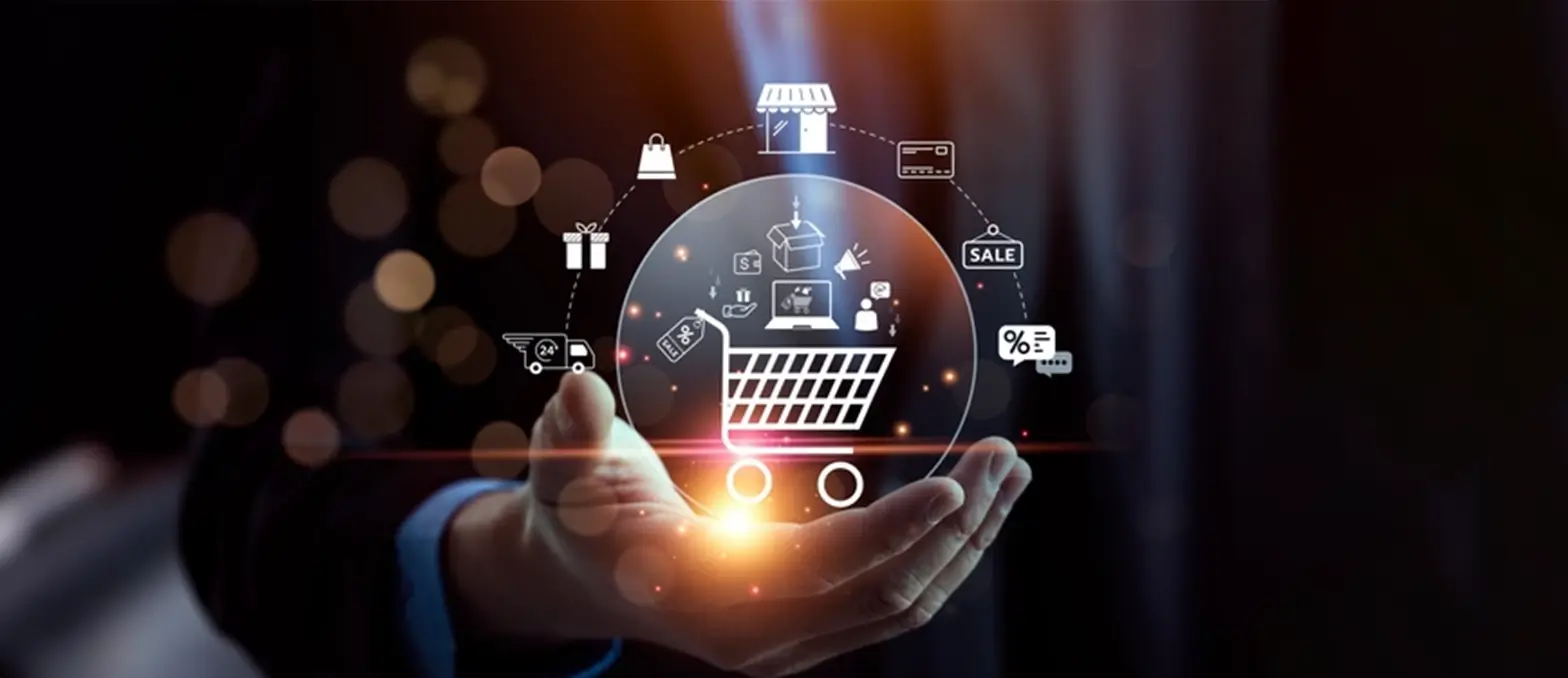The growth of IoT and Big Data applications is transforming businesses worldwide with their real-time data gathering and processing. Let’s find out what each of them means and the value they bring to the table.

Connected gadgets equipped with sensors form the Internet of Things (IoT), gathering and processing information as part of an interlinked network. These devices can connect to the Internet and exchange information with each other, creating a dynamic ambience.
Sensors and devices generate massive amounts of data known as Big Data, characterized by its high velocity, volume, and diversity. Analysts process this information through Big Data analytics to uncover trends, algorithms, and insights that support better decision-making.
Table of Contents
Integration of IoT and Big Data: Data Generation and Management
IoT and Big Data Integration has developed into a unique combination for industries and businesses. IoT gadgets produce huge volumes of information, which is gathered and stored for further analysis. Big data tools assist in processing this information, allowing businesses to understand the data and pull-out valuable insights.
This unique combination of two cutting edge technologies boosts various operations. From monitoring and maintenance to improving customer experiences and optimizing processes – it covers it all. IoT provides real-time information, while Big Data tools help with the identification of patterns and trends over time. Together, they can help forecast events, enhance decision-making, and automate operations.

How Big Data Analyzes and Interprets IoT Data: Methods and Techniques
Big Data in IoT makes use of various methods and techniques to analyze and process information from IoT devices. These techniques aid in changing unstructured, raw data into unique insights. Here are some of the key ways in which Big Data interprets and analyses IoT data:
- Information Consolidation: This method involves gathering raw data from multiple IoT gadgets and bringing it together to make a structured module. By doing so, it helps in simpler processing as well as the identification of larger patterns and trends across several data sources.
- Information Cleansing: This technique involves going through huge chunks of information to get rid of redundant or irrelevant information. Big Data in IoT keeps only the most pertinent and useful insights, it improves the overall efficiency of information analysis.
- Machine Learning (ML) algorithms analyze IoT data by identifying patterns and learning from them.These algorithms help in making predictions, detecting anomalies, and even predicting future trends, boosting the decision-making and accuracy in various IoT-powered applications.
- On-The-Spot Analytics: Real-time analytics help businesses analyze IoT data as it is gathered. This helps in generating immediate responses to various events and provides real-time insights. It is particularly notable in sectors like healthcare, disaster management, and security, where timely actions are important.
Industry applications of IoT-driven big data
IoT and Big Data integration is revolutionizing a variety of industries with new opportunities and solutions. Here are some of the key domains where this unique combination is proving to be beneficial:
1. Manufacturing
IoT and Big Data in the manufacturing sector help in the effective monitoring of equipment, boosting operational efficiency. This minimizes downtime, enhances productivity, and optimizes resource allocation, leading to considerable cost savings and streamlined production processes.
2. Transportation and Logistics
IoT frameworks in the transportation domain, provide real-time information on traffic, weather conditions, and vehicle locations. Big Data aids in optimizing routes, effective fleet management, forecasting maintenance, enhancing delivery times, and improving safety and operational performance in logistics.
3. Healthcare
Healthcare applications of IoT and Big Data gather real-time patient information and process it using Big Data tools. This helps in predicting potential risks, monitoring of health conditions, and customization of treatment plans, boosting patient outcomes, improving efficiency, and minimizing healthcare costs.
4. Telecommunications
In the field of telecommunications, IoT and Big Data help with network management, streamlining traffic flow and forecasting service interference. By processing data from millions of gadgets, telecom businesses can improve customer service, enhance overall network performance, and bring down operational costs with better resource allocation.
How the Integration of IoT and Big Data Can Transform Businesses?
IoT and Big Data integration offers numerous transformative benefits for businesses, allowing them to leverage real-time data for smarter decisions, better resource management, and increased efficiency.
1. Improved Operational Efficiency
By analyzing data generated by IoT devices, businesses can gain deep insights into their operations. Real-time monitoring allows companies to identify inefficiencies, bottlenecks, and areas of improvement. This data-driven approach enables organizations to optimize processes, reduce waste, and enhance overall productivity, leading to cost reductions and better utilization of resources.
2. Predictive Maintenance
IoT-powered gadgets constantly monitor the performance and health of equipment, infrastructure, and machinery. With the help of Big Data analytics, companies can forecast when a piece of equipment is going to require maintenance. IoT and Big Data integration helps companies schedule maintenance effectively, avoiding unforeseen downtime and costly repairs. IoT in Predictive maintenance not only increases the lifespan of equipment but also guarantees uninterrupted and smooth operations, reducing the operational risks involved.
3. Enhanced Decision-Making
The huge volume of information generated by IoT-fueled devices offers companies unique insights related to several aspects of their business processes. By leveraging Big Data analytics, companies can make more timely and informed decisions. These insights assist in strategic forecasting, planning, and adjusting for market trends rapidly. With the ability to analyze big chunks of information, businesses can further refine their operations, meet customer needs, and outclass competition.
4. Personalized Customer Experience
IoT and Big Data integration also allows companies to gather detailed report of customer behavior information. By analyzing this chunk of data, businesses can create highly customized experiences for their customer base. This refined approach boosts customer satisfaction, builds long-term customer loyalty, and encourages repeat business, leading to stronger relationships and business growth.
Overall, the blend of IoT and Big Data promotes innovation, boosts productivity, and allows businesses to stay relevant by leveraging information-driven decisions that boost success.
Methods used to manage and process the vast amount of data generated by IoT

Processing and managing huge volumes of information generated by IoT and Big Data applications calls for specialized techniques and methods:
- Edge Computing: Edge computing processes data right next to the source—often referred to as the ‘edge’ of the framework—instead of transferring all information to a central server. This brings down latency, boosts real-time decision-making, and lowers the overall load on cloud-based systems.
- Cloud Computing: Cloud platforms offer flexible storage and analysis power to manage the huge chunks of data from IoT frameworks. They aid businesses in storing, analyzing, and managing information effectively without raising expansive local infrastructure.
- Data Lakes: A data lake is a repository that’s used to store huge volumes of raw data for IoT and Big Data applications. IoT-powered information can be gathered in a data lake and analyzed using a variety of tools to pullout unique insights.
- Real-time Information Processing: Several IoT apps need action on a real-time basis. Tools such as Apache Flink and Apache Kafka help in the real-time analysis of IoT data, providing instant responses to events like equipment malfunctions or traffic conditions.
- Information Warehousing: For structured information, businesses often make use of data warehousing techniques that compile data from different IoT gadgets for further processing. These warehouses help businesses with report generation, tracking of trends, and informed decision-making based on historical patterns.
- Data Filtering and Compression: To minimize the huge chunks of information being transferred and stored for IoT and Big Data applications, filtering and compression techniques are used. This guarantees that only meaningful and relevant data is analyzed, lowering costs and boosting efficiency.
The Impact of Data Security and Privacy on IoT and Big Data Applications
Since IoT devices gather huge amounts of information, ensuring privacy and security is important. As the number of interlinked gadgets multifold, so does the sensitive properties of the information that they generate. The risk of unauthorized access and data breaches increases, making security measures more essential than ever. Here are some of the most important ways to ensure the privacy and security of IoT and Big Data applications:
1. Encryption of Data
Encryption is one of the most primary techniques of safeguarding information as it’s transferred among IoT gadgets, central systems, and sensors. Through the encryption of data during transmission, it is guarded from being altered or intercepted or by unauthorized agents. Both Big Data systems and IoT devices depend on robust encryption protocols to protect sensitive data. End-to-end encryption ensures that even in the case of data breach by malicious agents, it cannot be tampered with without the designated decryption key.
2. Access Control and Authentication
Authentication protocols guarantee that only authorized agents can modify or access models that work on the IoT and Big Data integration. MFA (multi-factor authentication) is popularly leveraged to offer an additional layer of security, making it more complex for unauthorized agents to gain control. Biometric authentication, secure key management, and strong passwords further safeguard sensitive systems. Access control policies, like RBAC (role-based access control), restrict users to only the resources or information they require to carry out tasks, lowering the potential for data breach.
3. Anonymization of Data
Data anonymization is known as the removal of PII (personally identifiable information) from databases before utilizing them for Big Data analysis. By doing so, businesses can ensure that user privacy stays protected at all costs. This is considerably important when analyzing Big Data in IoT that may be exposed to third parties. It helps ensure that even if the information is breached or accessed, it cannot be backtracked to individual users.
4. Regulatory Compliance
Falling in compliance with data protection regulations like the GDPR (General Data Protection Regulation) is a significant aspect of protecting Big Data and IoT systems. These regulations set benchmarks for how businesses must manage personal information, including permissions for consent, information storage, and data holding. Ensuring compliance such regulations aids businesses in avoiding legal fines and develop customer loyalty by demonstrating a commitment to data security.
Failure to secure the application of Big Data in IoT can result in information breaches, financial penalties, loss of customer trust, and damage to a company’s reputation. Therefore, organizations and businesses must prioritize impenetrable security frameworks when integrating IoT with Big Data technologies.
Types of Predictive Analytics Applied to IoT and Big Data
Predictive analytics plays a crucial role in IoT and Big Data with its forecasting abilities. Some of the most common types of Predictive analytics used can be explained as follows:
- Depictive Analytics: This is the category of predictive analytics which focuses on building comprehension towards historical data patterns. It aids businesses in processing Big Data in IoT to get unique insights into the latest trends, which can inform future decisions.
- Diagnostic Analytics: This type of predictive analytics helps businesses with the identification of specific issues or events. It is considerably important for detecting system malfunctions, failures, or anomalies within processes or devices.
- Prescriptive Analytics: Prescriptive analytics offer suggestions related to the best course of action depending on IoT data and Big Data processing. This is used in functions like optimization of routes in logistics or suggesting actions to enhance machine performance.
- Predictive Maintenance: Predictive Maintenance analytics leverage Big Data in IoT to forecast the maintenance needs of equipment. It allows companies to schedule timely repairs, minimizing unnecessary downtime and lowering overall maintenance costs.
These are the most common types of predictive analytics that businesses can use to forecast outcomes more effectively, enhancing overall efficiency, lowering costs, and improving decision-making.

Emerging Trends in IoT and Big Data
The growing acceptance of global business towards IoT and Big Data integration has undoubtedly opened up a new world of possibilities. Here are some of the top trends that are reshaping several industries in the same context:
- 5G Network: The growing usage of 5G internet will boost IoT’s ability to process data rapidly, leading to enhanced real-time connectivity and processing of data.
- ML and AI: The combination of AI and ML with Big Data and IoT analytics boosts the overall precision. AI can catch patterns in the data on its own and even forecast future events, boosting operational efficiency.
- Edge AI: Blending edge computing with AI will make data processing happen near the source, lowering latency and enabling real-time insights. This trend is especially helpful for those applications of Big Data in IoT that call for immediate responses, like autonomous vehicles.
- Blockchain and IoT: Blockchain technology is being welcomed by more and more businesses worldwide to safeguard IoT networks and Big Data apps. It ensures data security, transparency, and integrity, which is important for reliance in sensitive applications like financial transactions or healthcare.
These are some of the trends that are revolutionizing the future of Big Data and IoT, turning them more secure, efficient, and capable of offering real-time insights across several domains.
Future opportunities for businesses integrating IoT and Big Data
IoT and Big Data integration open up several opportunities for businesses across the world to boost operations, optimize resources, and offer streamlined services. Let’s discuss some of the key future opportunities for companies that are embracing these technologies:
1. Improved Preventive and Predictive Maintenance
Businesses can forecast and help with the prevention of equipment failures by processing IoT data, lowering maintenance costs and minimizing unplanned downtime. Predictive maintenance helps streamline operational efficiency through the identification of potential issues early, enabling timely repairs and improving the asset’s lifespan.
2. Customized Customer Experiences
IoT and Big Data help businesses to understand the behaviors and preferences of customers. With a strategic application of Big Data in IoT, businesses can deliver customized experiences via targeted marketing, and personalized recommendations, boosting customer satisfaction, loyalty, and driving growth.
3. Optimized Supply Chain Productivity
IoT sensors offer real-time insights related to transportation, inventory, and supply chain performance. Analyzing this information with Big Data tools helps businesses optimize supply chains, bring down delays, enhance demand forecasting, and allocate resources efficiently, promoting cost savings.
4. Energy Sustainability and Efficiency
IoT devices can also monitor energy usage on a real-time basis. Big Data analytics aids businesses in the identification of energy inefficiencies and the implementation of relevant strategies. This not only lowers the overall costs but also supports green initiatives, allowing an IoT app development company to meet environmental regulations and objectives.
5. Information-Backed Product Development
IoT-powered data offers unique insights into how customers perceive products. Processing this information helps businesses with the identification of areas for improvement and make necessary improvements. This leads to enhanced product quality, faster time to market, and improved customer satisfaction.
6. Infrastructure Management and Smart Cities
IoT and Big Data are transforming urban planning with the development of smart cities. By processing information from IoT gadgets in utilities, infrastructure, and transportation, cities can streamline traffic flow, lower energy usage, and improve public services, enhancing the quality of life for residents.
Conclusion
The integration of IoT and Big Data applications is changing industries by supporting businesses with real-time data that enhances operations. IoT gadgets collect huge volumes of information, and Big Data tools aid companies in analyzing it to identify patterns and improve decision-making. Industries such as healthcare, logistics, and manufacturing are leveraging these technologies to enhance customer service, maintenance, and overall efficiency.
As these technologies develop, organizations across the world have more opportunities to grow and innovate. IoT and Big Data help companies enhance processes, lower costs, and develop customized experiences for customers. With companies realizing the business potential they could unlock by collaborating with an IoT development company, the future looks promising. Latest trends such as 5G, blockchain, and AI are working in synergy to make the most of what IoT and Big Data can offer businesses.
Curious how this data is analyzed for real-world impact? Explore our blog on IoT in Data Analytics






